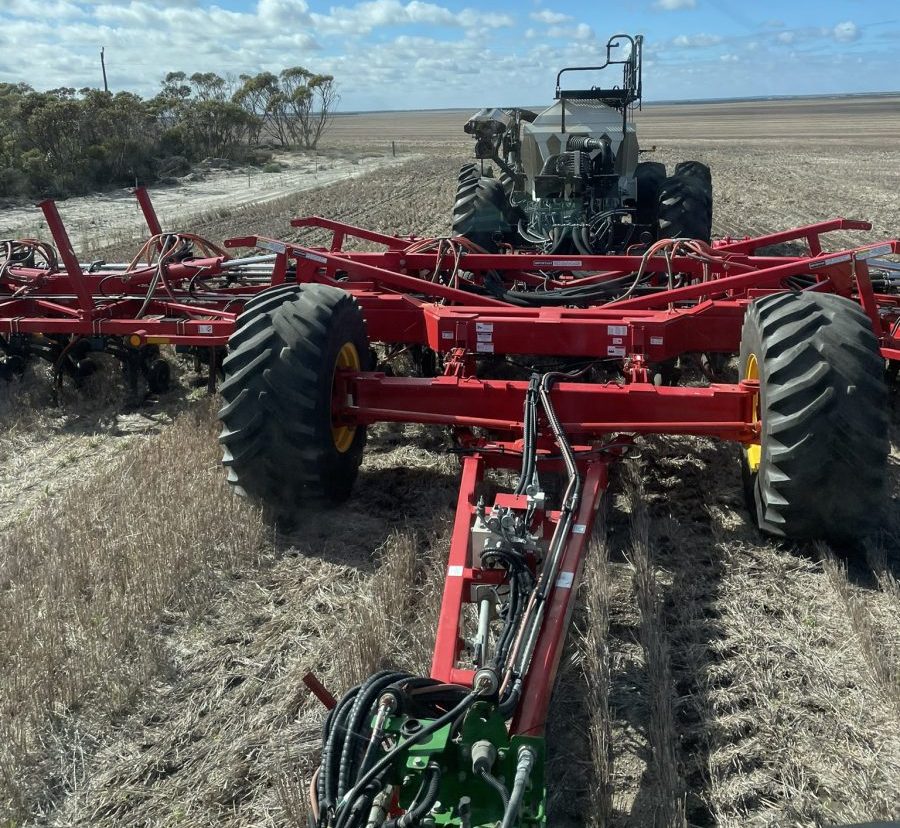
Planting of the 2023 winter crop is under way at this farm at Cascade, west of Esperance. Photo: John Carmody/Tom’s Brook Farm
RECENT rain across large portions of the Western Australian grainbelt has resulted in many growers taking the opportunity to get started sowing canola, the Grain Industry of Western Australia said in its April crop report released on Good Friday.
GIWA said there was some hesitancy around what to do due to the seasonal outlook being drier than average.
However, those that have had more than 40mm of steady rain, particularly in the central and southern regions of the state, are taking the opportunity to get as much canola in the ground as they think will safely emerge under current moisture and temperature conditions.
Early start in north, central zones
The northern regions of the grainbelt have had some very good falls of rain along the eastern low-rainfall corridor and growers took the chance on sowing several paddocks to canola before the soil surface dried out.
The central medium-to-low rainfall regions of the state received higher rainfall totals on the whole, and the falls were steadier and soaking, so anything from half to two thirds of intended canola plantings will go in the ground on the rain received.
This is a golden early planting opportunity for those growers and should ensure yield levels that will be profitable irrespective of what happens during the winter.
The rainfall totals dropped off closer to the west coast from Geraldton to Albany, and along the south coast to Esperance.
The Esperance port zone, except for the far eastern regions, did not receive enough rainfall to plant on, except for isolated cases.
Subsoil reserves mixed
The chaos caused by the rain over harvest in the Esperance region has resulted in good levels of stored soil moisture, which means that once the break occurs, seeding decisions will be easier.
In sharp contrast, the very long growing season and dry summer for most of the state has left soil-moisture reserves low, particularly in the northern regions.
Growers in these areas have already decided to take a risk-averse approach to the year.
Some of the hesitancy is around the seasonal outlook with a drier-than-average year predicted, and while there is no certainty of this, the probability of a low-rainfall season is greater than it has been in recent years.
While the predictive accuracy in autumn for these climate events is low, it is unusual for the climate models to align together so strongly in their prediction that below normal rainfall is more likely from April to June over most of Australia.
Further slide in barley seen
The general swing from barley to wheat in the last few years will likely continue unless barley prices continue to strengthen.
Large areas of canola plantings are again in the mix, although a late break could see the area dropping off.
Lupin and pulse area are certainly going to be down now that the price of nitrogen has fallen from previous highs.
The large carry-over stocks are also weighing on growers’ minds.
While there is a desire to reduce sheep numbers by growers long-term across the state, the manufacturing and export brake on older stock may see pasture area remain about the same for the time being.
There may be a slight increase in area intended for hay, as there are signs of strengthening market signals.
Oats in general are suffering some “recency bias” due to lack of frost in recent years, putting the benefits of oats as a frost-mitigation strategy behind the potential profit margin of alternative crops.
This may impact on oat area intended for milling.
Source: GIWA

HAVE YOUR SAY